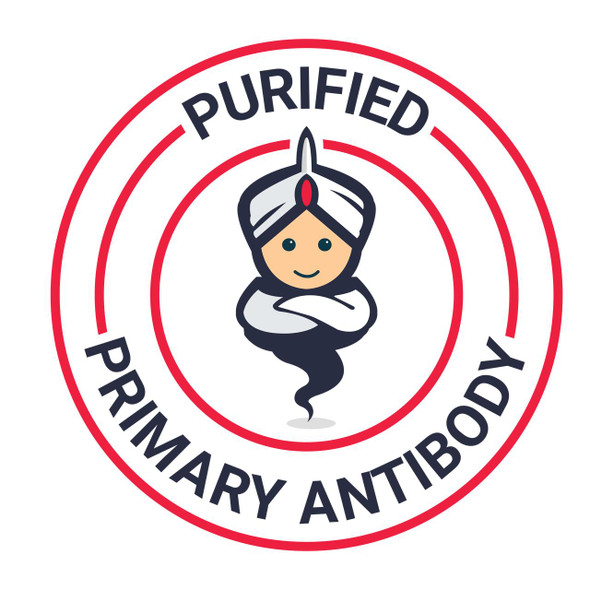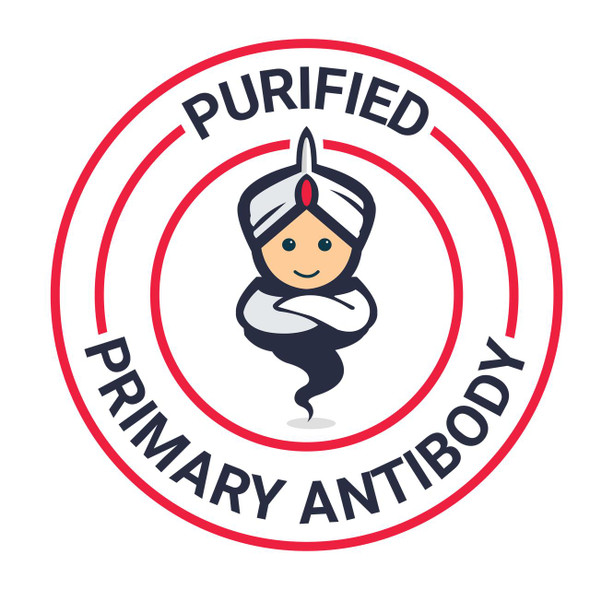CD37 monoclonal antibody (PE) (AGIM0356)
- SKU:
- AGIM0356
- Product Type:
- Antibody
- Antibody Type:
- Monoclonal Antibody
- Reactivity:
- Human
- Host Species:
- Mouse
- Isotype:
- IgG1
- Clone:
- HH1
- Conjugation:
- PE
- Applications:
- FC
Description
system_update_altDatasheet
| Product Name: | CD37 monoclonal antibody (PE) |
| Product Code: | AGIM0356 |
| Size: | 100 µL |
| Reactivity: | Human |
| Clone: | HH1 |
| Applications: | Flow Cytometry |
| Conjugate: | PE |
| Isotype: | IgG1 |
| Host Species: | Mouse |
| Storage: | Store at 4°C. Do not freeze. Avoid prolonged exposure to light. . |
| Uniprot: | Q8IZA3 |
| Background: | CD37, also known as TSPAN26, is a 40 - 45 kDa palmitoylated tetraspanin superfamily glycoprotein that is expressed by lymphocytes and myeloid cells. CD37 directly associates with dectin-1 on macrophages and stabilizes cell surface dectin-1 expression. It also inhibits T cell activation and proliferation by limiting T cell receptor signaling. Human CD37 shares 80% amino acid sequence identity with mouse and rat CD37. |
| UniProt Protein Function: | H1FOO: May play a key role in the control of gene expression during oogenesis and early embryogenesis, presumably through the perturbation of chromatin structure. Essential for meiotic maturation of germinal vesicle-stage oocytes. The somatic type linker histone H1c is rapidly replaced by H1oo in a donor nucleus transplanted into an oocyte. The greater mobility of H1oo as compared to H1c may contribute to this rapid replacement and increased instability of the embryonic chromatin structure. The rapid replacement of H1c with H1oo may play an important role in nuclear remodeling. Belongs to the histone H1/H5 family. 2 isoforms of the human protein are produced by alternative splicing. Protein type: DNA-binding Chromosomal Location of Human Ortholog: 3q22.1 Cellular Component: nucleolus; nucleus Molecular Function: nucleosomal DNA binding Biological Process: nucleosome positioning |
| UniProt Protein Details: | |
| NCBI Summary: | Histones are basic nuclear proteins that are responsible for the nucleosome structure of the chromosomal fiber in eukaryotes. Nucleosomes consist of approximately 146 bp of DNA wrapped around a histone octamer composed of pairs of each of the four core histones (H2A, H2B, H3, and H4). The chromatin fiber is further compacted through the interaction of a linker histone, H1, with the DNA between the nucleosomes to form higher order chromatin structures. The protein encoded is a replication-independent histone that is a member of the histone H1 family. This gene contains introns, unlike most histone genes. The related mouse gene is expressed only in oocytes. [provided by RefSeq, Oct 2015] |
| UniProt Code: | Q8IZA3 |
| NCBI GenInfo Identifier: | 74762503 |
| NCBI Gene ID: | 132243 |
| NCBI Accession: | Q8IZA3.1 |
| UniProt Secondary Accession: | Q8IZA3,Q86WT7 |
| UniProt Related Accession: | Q8IZA3 |
| Molecular Weight: | 21,010 Da |
| NCBI Full Name: | Histone H1oo |
| NCBI Synonym Full Names: | H1 histone family member O, oocyte specific |
| NCBI Official Symbol: | H1FOO |
| NCBI Official Synonym Symbols: | H1.8; H1oo; osH1 |
| NCBI Protein Information: | histone H1oo |
| UniProt Protein Name: | Histone H1oo |
| UniProt Synonym Protein Names: | Oocyte-specific histone H1; Oocyte-specific linker histone H1; osH1 |
| Protein Family: | Histone |
| UniProt Gene Name: | H1FOO |
| UniProt Entry Name: | H1FOO_HUMAN |




![PE Anti-Human CD37 Antibody [IPO-24] (AGEL2832) PE Anti-Human CD37 Antibody [IPO-24] (AGEL2832)](https://cdn11.bigcommerce.com/s-h68l9z2lnx/images/stencil/590x590/products/229936/605332/pe-anti-human-cd37-antibody-ipo-24__63928.1706890036.jpg?c=2)





